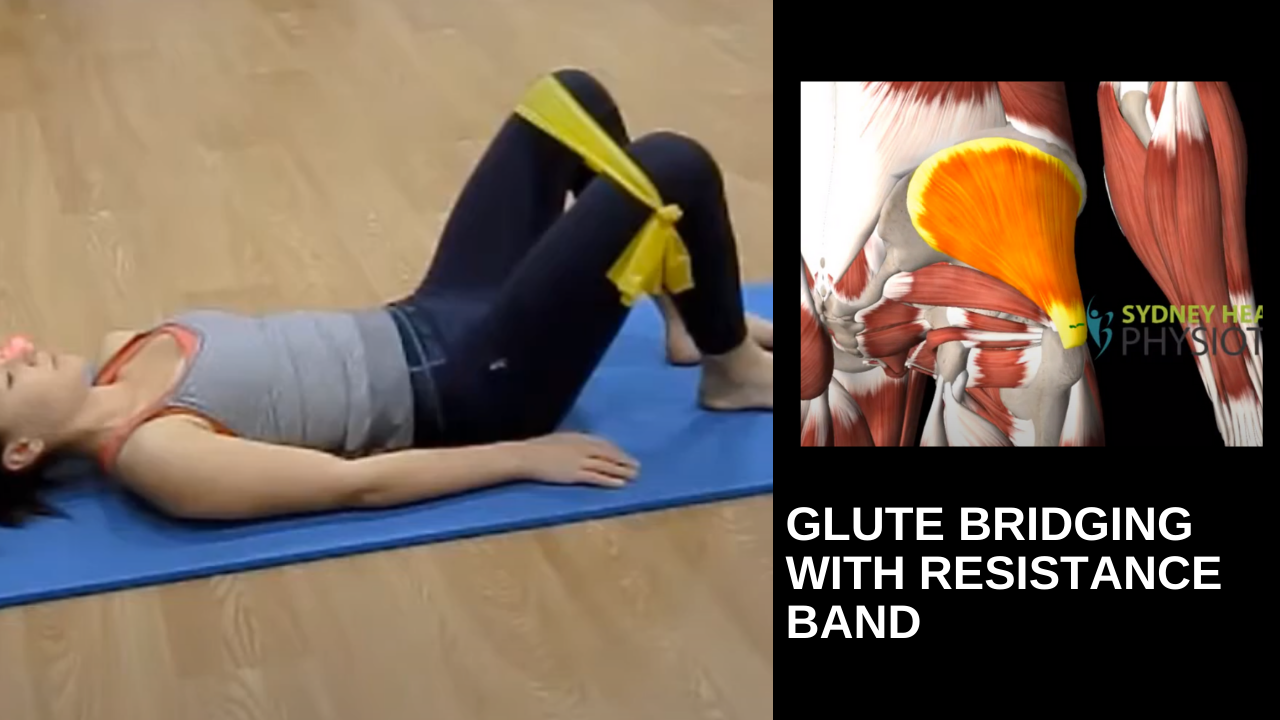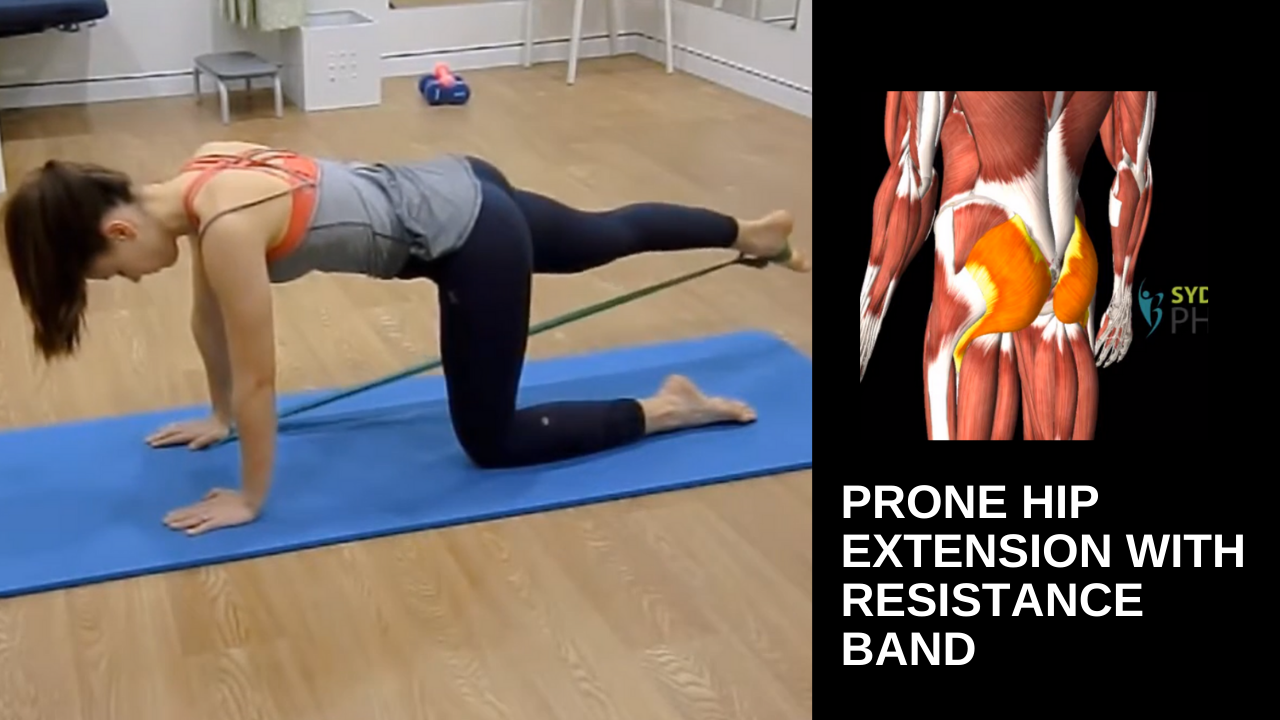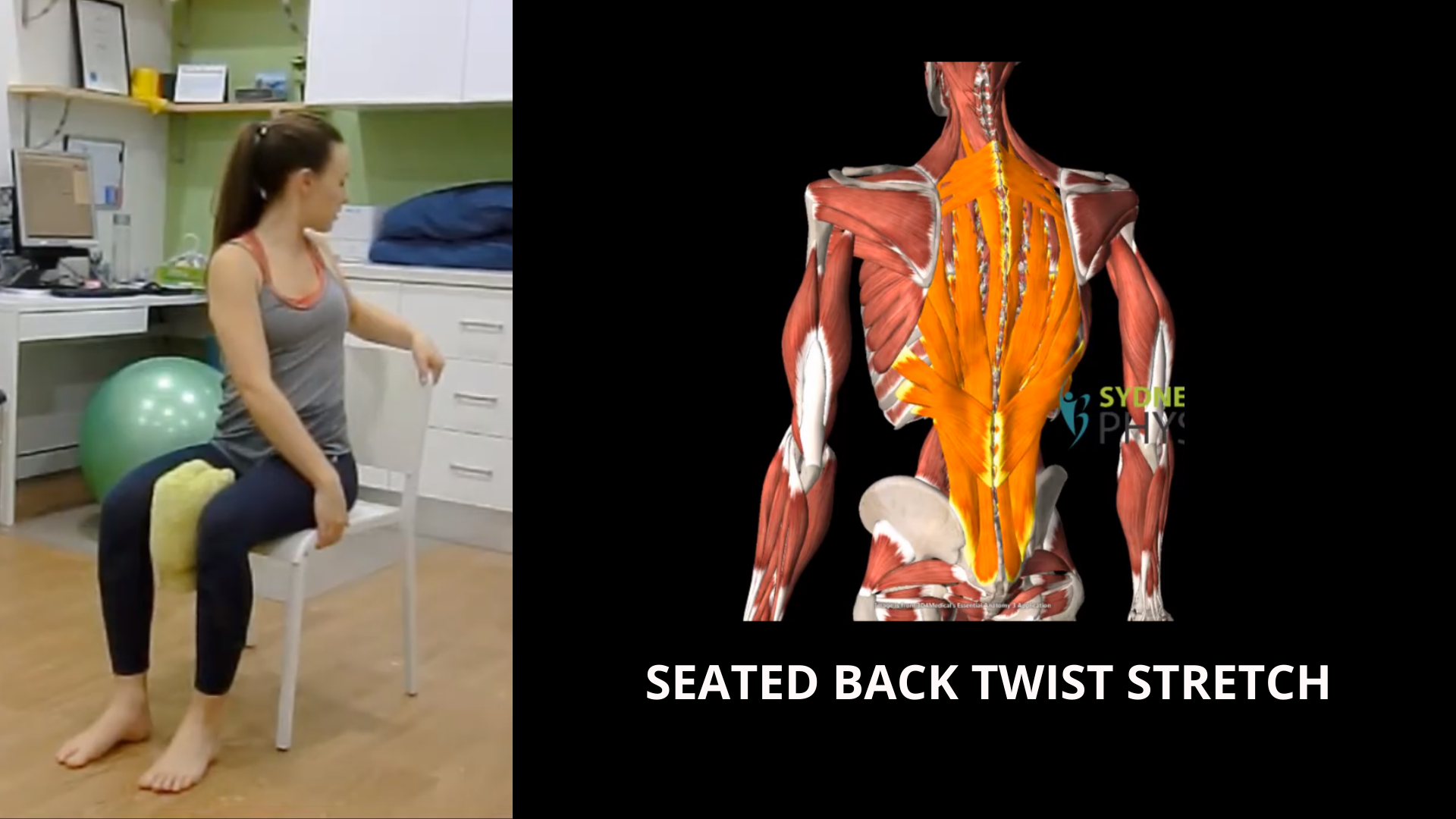Glute bridging with resistance band
Supine glute bridges with a band around the legs activate and strengthen the hip glutes, essential for back pain prevention and improved stability. Ideal for those with lower back discomfort, athletes, and individuals seeking core and hip support, this exercise promotes strong glutes to protect the lower back and enhance posture.
Bridging on ball
The glute bridge on a stability ball engages and strengthens the glutes and core, promoting balance and back support. Ideal for individuals aiming to improve hip stability, reduce lower back strain, and enhance overall core strength, this exercise builds functional stability and boosts glute activation.
Prone hip extension with resistance band
The 4-point kneeling hip extension with a resistance band targets glute and hip strength, improving stability and control. Ideal for athletes, those rehabbing hip or lower back issues, and anyone looking to enhance core support, this exercise promotes hip alignment and balanced muscle activation.
Seated core and hip hold
Sitting on a stability ball for hip flexor activation engages the core and strengthens pelvic floor endurance, supporting posture and stability. Ideal for individuals seeking improved balance, core control, and lower body strength, this exercise enhances core endurance and promotes pelvic alignment.
Iliacus groin stability
The supine hip activation exercise targets groin muscles to improve strength and stability in the hip area. Ideal for individuals recovering from groin injuries, athletes, and anyone looking to enhance hip flexibility, this exercise supports balanced movement and reduces strain on the inner thigh and hip.
Seated trunk rotation against resistance band
The seated trunk rotation against a resistance band targets back and core muscles, enhancing rotational strength and control. Ideal for athletes, golfers, cricketers, individuals with back discomfort, and anyone aiming to improve core stability, this exercise builds resilience in the spine and promotes balanced movement.
Seated back twist stretch
The seated back twist stretch relieves tension and improves mobility in the spine, making it ideal for office workers who sit for extended periods. This stretch promotes spinal flexibility, reduces stiffness, and supports better posture, helping you feel more comfortable throughout the day.
Seated knee raise
The seated knee extension exercise targets the quadriceps, helping to relieve pain in the front of the knee. Ideal for individuals with knee discomfort or those in rehab, this movement strengthens knee support, promotes alignment, and aids in reducing strain on the patellar tendon.
Is your desk job causing you neck, back and shoulder pain?
Neck posture & ergonomics for office workers.
The benefit of being strong as you age
Muscle importance for seniors. Bone density for elderly people. How physiotherapist and exercise physiologist can help.
Core stability and control
How core muscles are protectors of your spine, and how do you make sure that their natural muscle tone supports your posture. The key is not to consciously keep your core activated - that is a very outdated. The key is to have that core muscle tone so it supports you without thinking about. That is core stability and core control!
Correct squat lifting technique helps you to stay strong
Using correct squat lifting technique not only strengthens your muscles and bones but also boosts mental health. Loading through the body stimulates bone density, reducing injury risk, while releasing endorphins that enhance mood and reduce stress. Practicing safe, effective squat techniques builds physical resilience and supports overall well-being.
Upper cross posture from long screen time
Upper-crossed posture from long screen time leads to forward-rounded shoulders and a strained neck, common among those with long office hours. This posture imbalance places excess tension on the neck and upper back muscles, often resulting in discomfort and stiffness. Addressing this with targeted exercises can help realign posture and reduce neck strain.
How dry needling works?
Dry needling targets trigger points in muscles, effectively reducing musculoskeletal (MSK) pain by relieving muscle tension and promoting natural healing. This technique helps to release tight areas, improve blood flow, and restore mobility, providing quick relief and supporting long-term pain management.

















